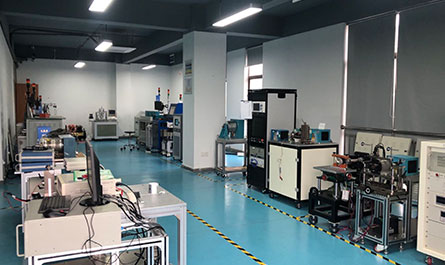In the intricate world of mechanical engineering, even the tiniest inefficiency can snowball into catastrophic failure. Imagine a high-speed robotic arm in an automotive assembly line suddenly jerking off-course, or a wind turbine’s gearbox grinding to a halt during a storm. The culprit? Often, it’s backlash—the unwanted movement between mating components. But what if you could predict, measure, and minimize this silent saboteur? Enter **Precision Backlash Analysis**, a game-changing approach transforming industries one micron at a time.
---
### The Backlash Conundrum: Why It Matters More Than You Think
Backlash isn’t just a minor annoyance—it’s a multimillion-dollar problem. In gear systems, robotics, aerospace mechanisms, and even medical devices, unchecked backlash leads to:
- Premature wear and tear
- Energy inefficiency
- Reduced positional accuracy
- Safety risks
Traditional methods of backlash measurement, like dial indicators or manual inspections, are time-consuming, prone to human error, and often fail to capture dynamic conditions. For instance, a gear pair might show minimal backlash during static testing but behave unpredictably under operational stress or temperature fluctuations.
This is where Precision Backlash Analysis shines. By combining advanced sensors, real-time data analytics, and AI-driven modeling, it offers a holistic view of mechanical systems in action. Think of it as an MRI scan for machinery—revealing hidden flaws before they escalate.
---
### How Precision Backlash Analysis Works: A Symphony of Tech 🎻
1. **High-Resolution Sensing**
Using laser interferometers, strain gauges, or non-contact optical sensors, the system captures backlash at resolutions as fine as 0.1 microns. Unlike static measurements, these tools monitor components during motion, simulating real-world loads and speeds.
2. **Dynamic Simulation**
Software platforms like **GearSim Pro** or **BacklashTrack+** recreate operational environments—sudden torque spikes, thermal expansion, and lubrication variances. Engineers can then observe how backlash evolves under stress, identifying weak points in the design phase itself.
3. **Predictive Analytics**
Machine learning algorithms crunch historical data to forecast backlash trends. For example, a CNC machine’s ball screw might degrade by 2% annually due to backlash—a pattern the system flags long before manual inspections detect it.
4. **Closed-Loop Optimization**
In smart factories, analysis results feed directly into adaptive control systems. If a robotic arm’s joint shows increasing backlash, the controller compensates by adjusting motor torque or recalibrating positional offsets—all in real time.
---
### Real-World Impact: Case Studies That Speak Volumes
**Case 1: Wind Energy’s Silent Revolution 🌪️**
A leading turbine manufacturer faced recurring gearbox failures in offshore installations. Traditional inspections blamed “material defects,” but Precision Backlash Analysis revealed a different story: micro-level backlash in planetary gears, amplified by saltwater corrosion. By switching to anti-backlash gears coated with nanoceramic layers, downtime dropped by 62%, saving $8.4M annually.
**Case 2: Surgical Robots That Don’t Tremble 🏥**
During minimally invasive surgeries, a 0.5mm backlash in a robotic scalpel could spell disaster. A med-tech startup used 3D-printed harmonic drives with integrated backlash sensors, achieving 99.98% precision. Surgeons now perform complex procedures with sub-millimeter accuracy—even at 3 AM after three cups of coffee.
---
### The Future: Backlash-Free by Design?
As additive manufacturing and smart materials evolve, backlash is becoming a “solved problem” in next-gen systems. DIN EN 60034 -memory alloys that self-adjust under load, or gears printed with gradient stiffness—these innovations are turning Precision Backlash Analysis from a diagnostic tool into a design philosophy.
Yet, challenges remain. How do we balance zero-backlash ideals with cost constraints? Can nano-coatings withstand Mars-level dust storms for rovers? The race is on, and the stakes are planetary.
---
### Closing Thoughts: Don’t Let Backlash Bite Back
Whether you’re building Mars rovers or espresso machines, backlash lurks in the shadows. Precision Backlash Analysis isn’t just about fixing problems—it’s about reimagining what machinery can achieve. After all, in a world racing toward quantum computing and AI, shouldn’t our gears be just as smart?
Ready to eliminate the “wiggle room” in your systems? The future of precision is backlash-free… and it starts with a single analysis. 🔍💡

